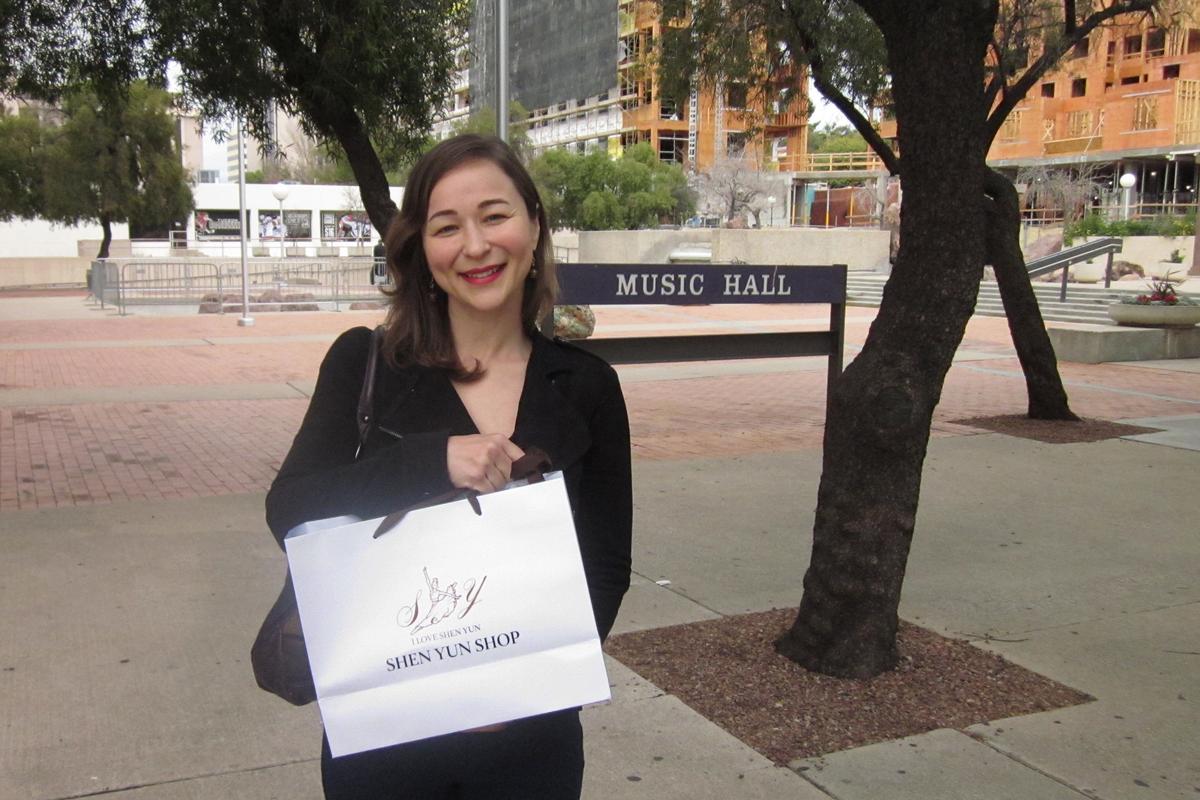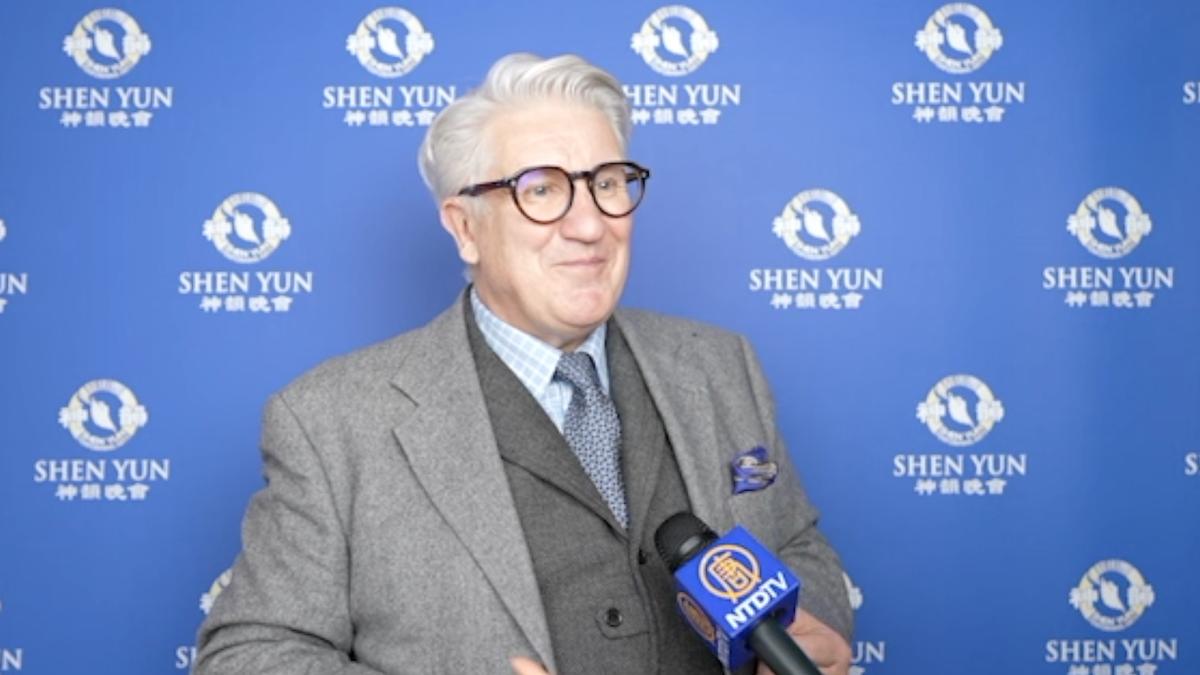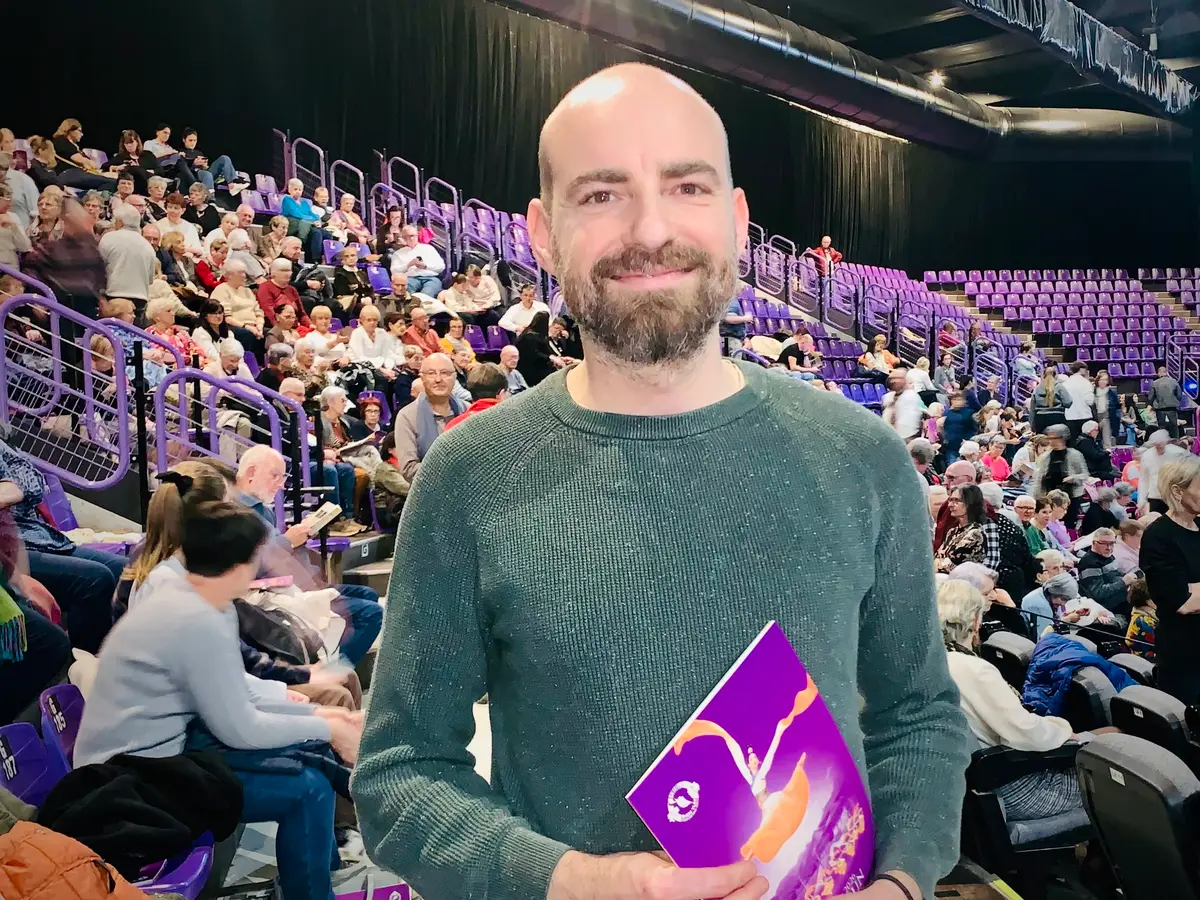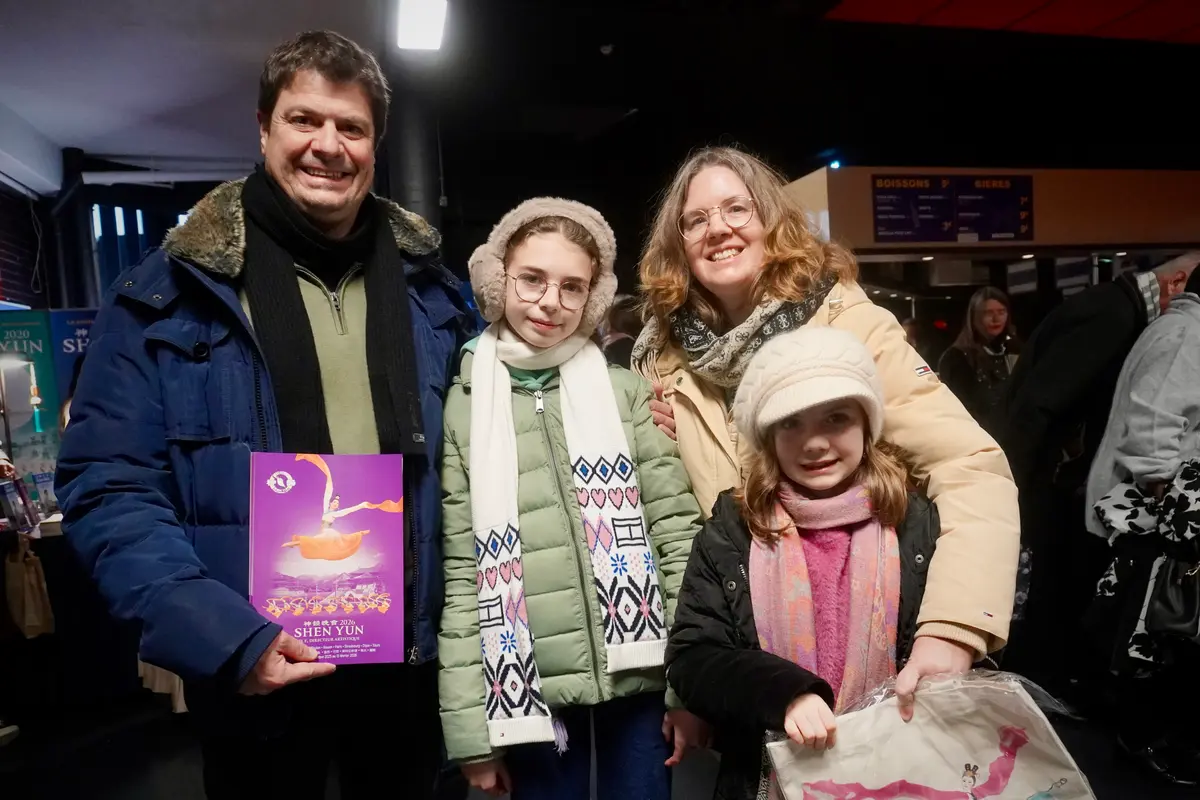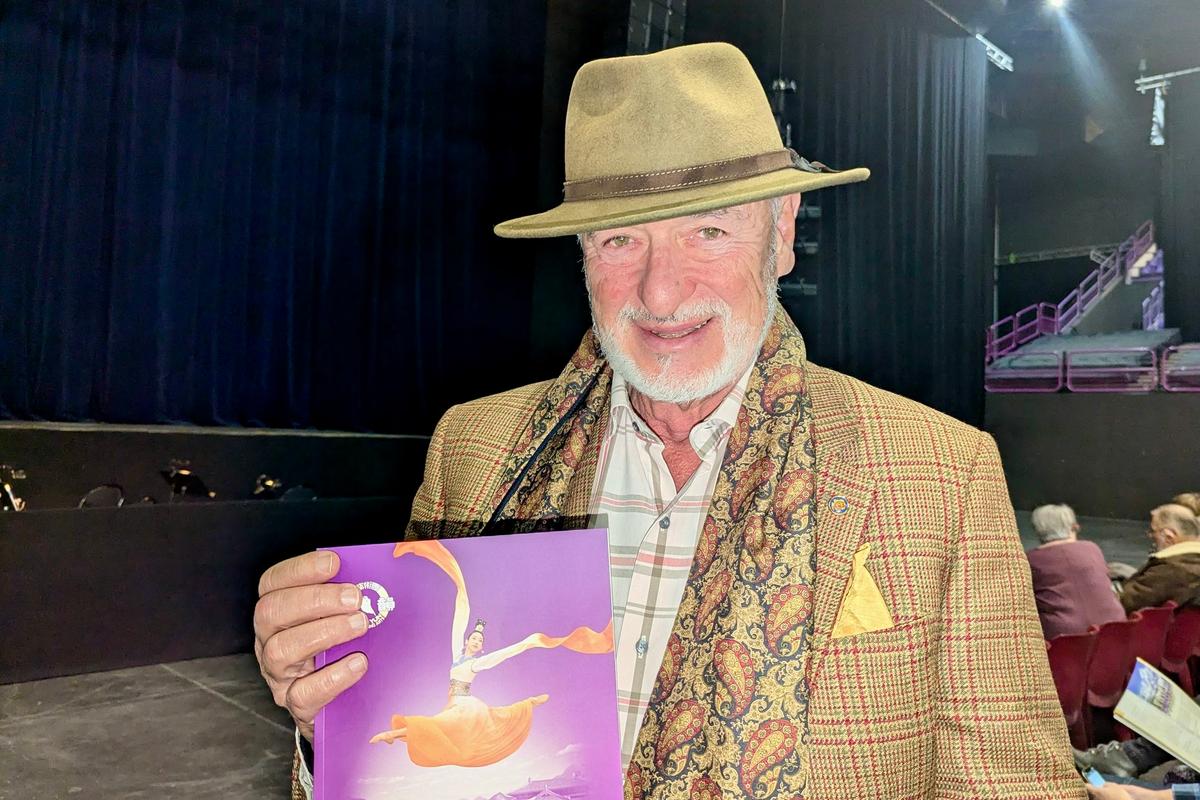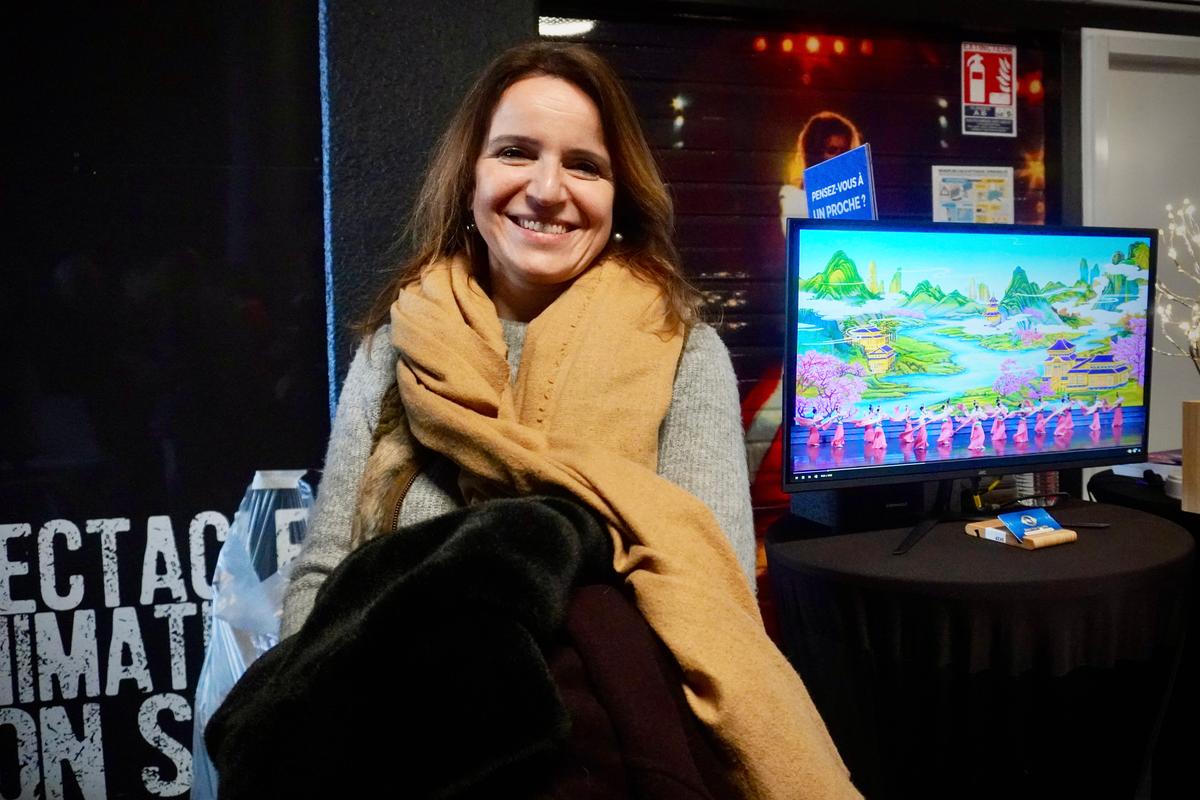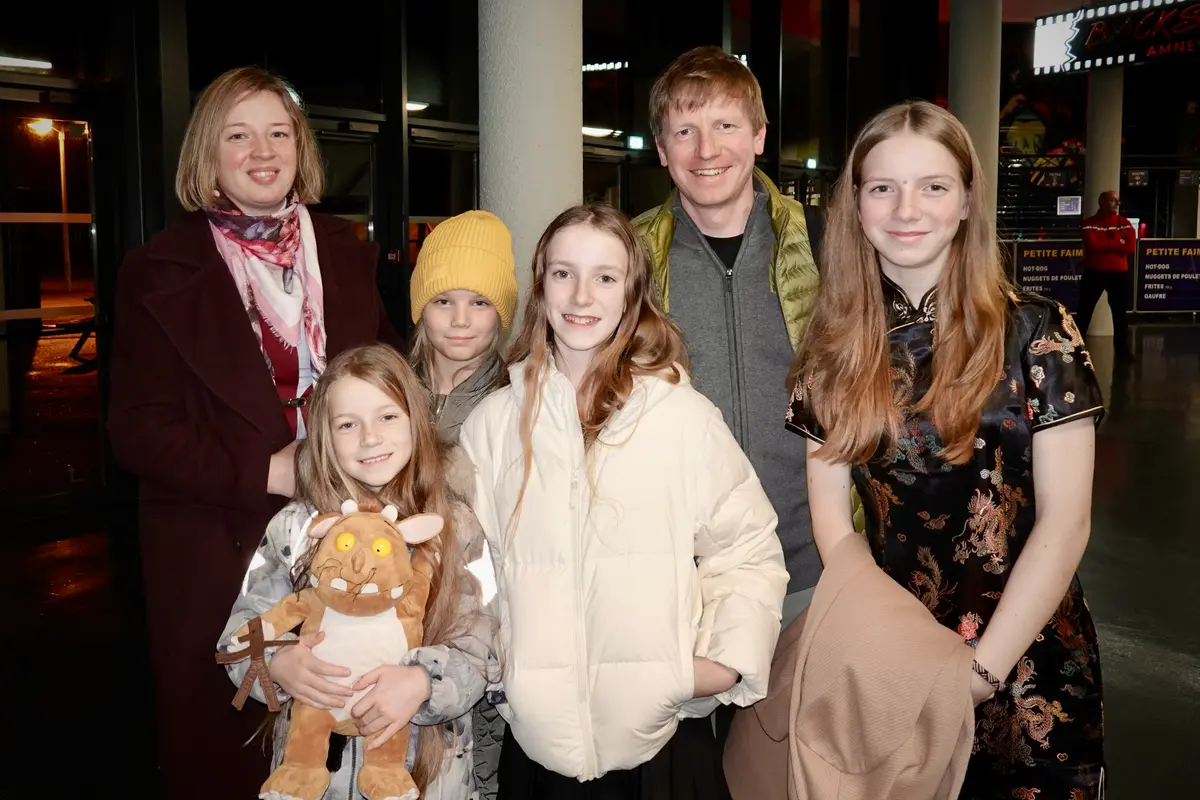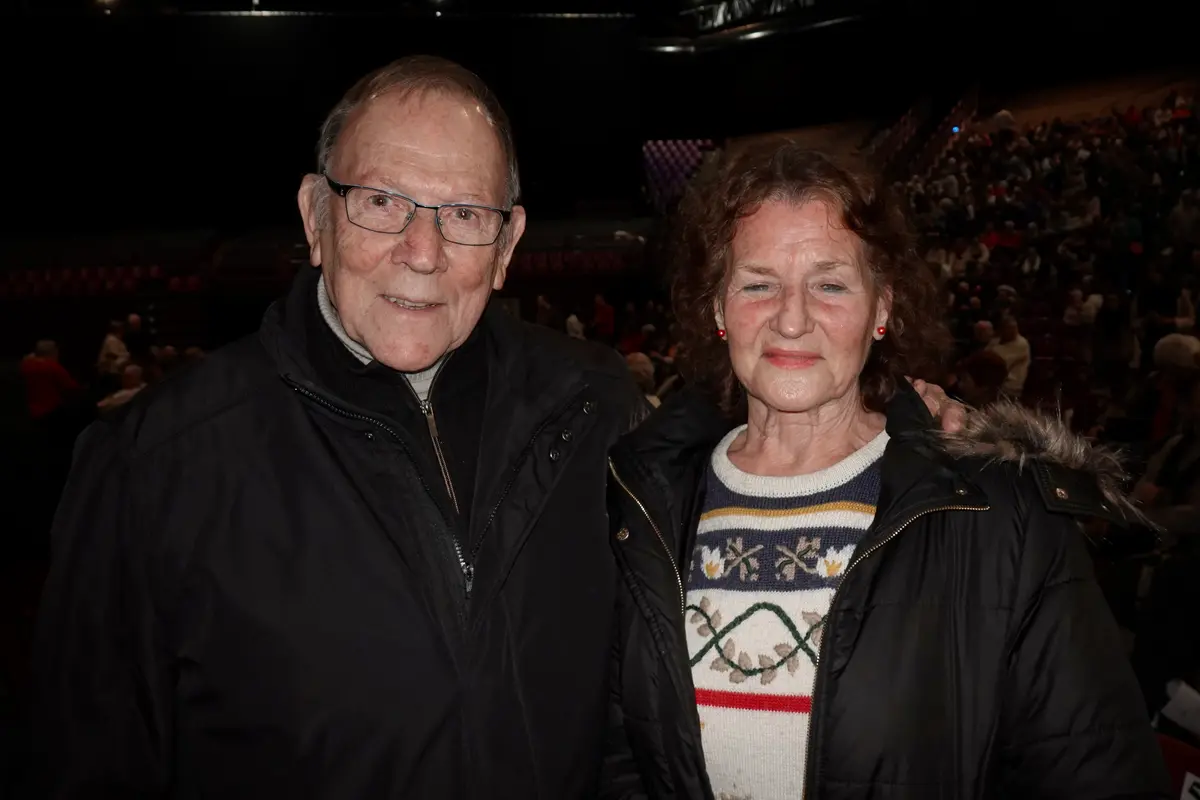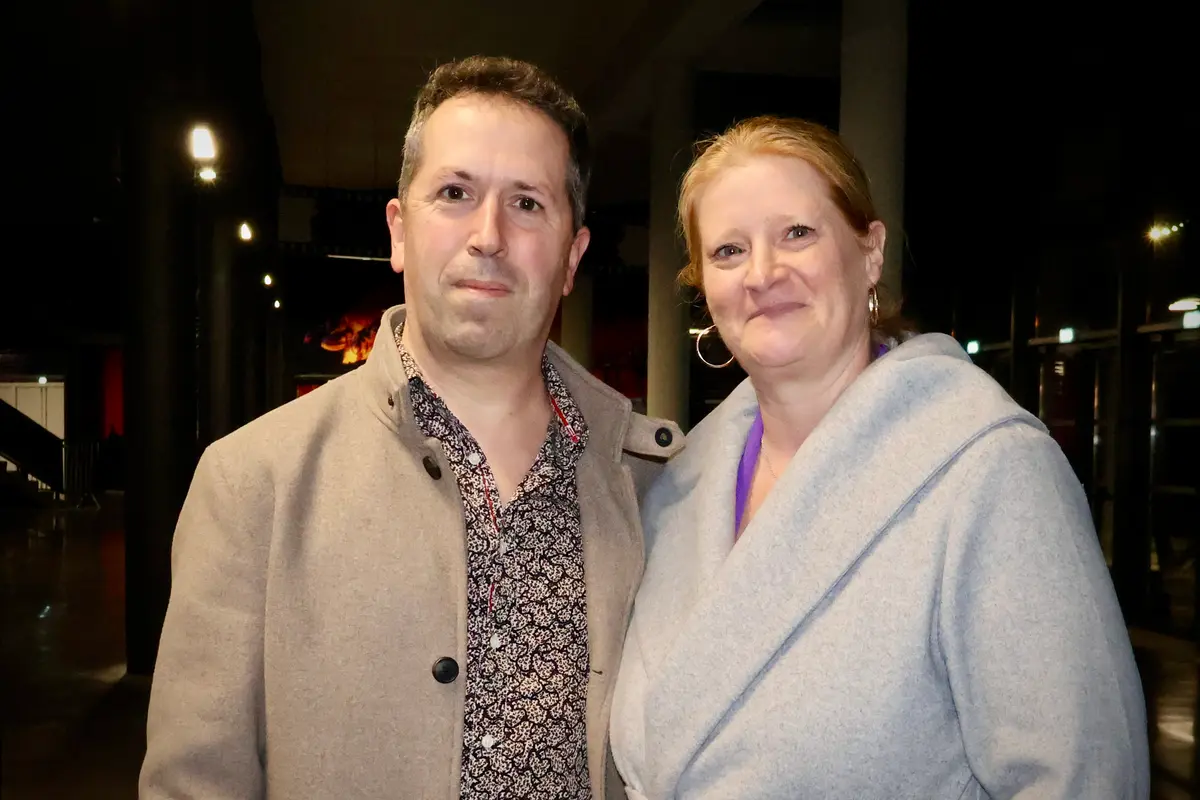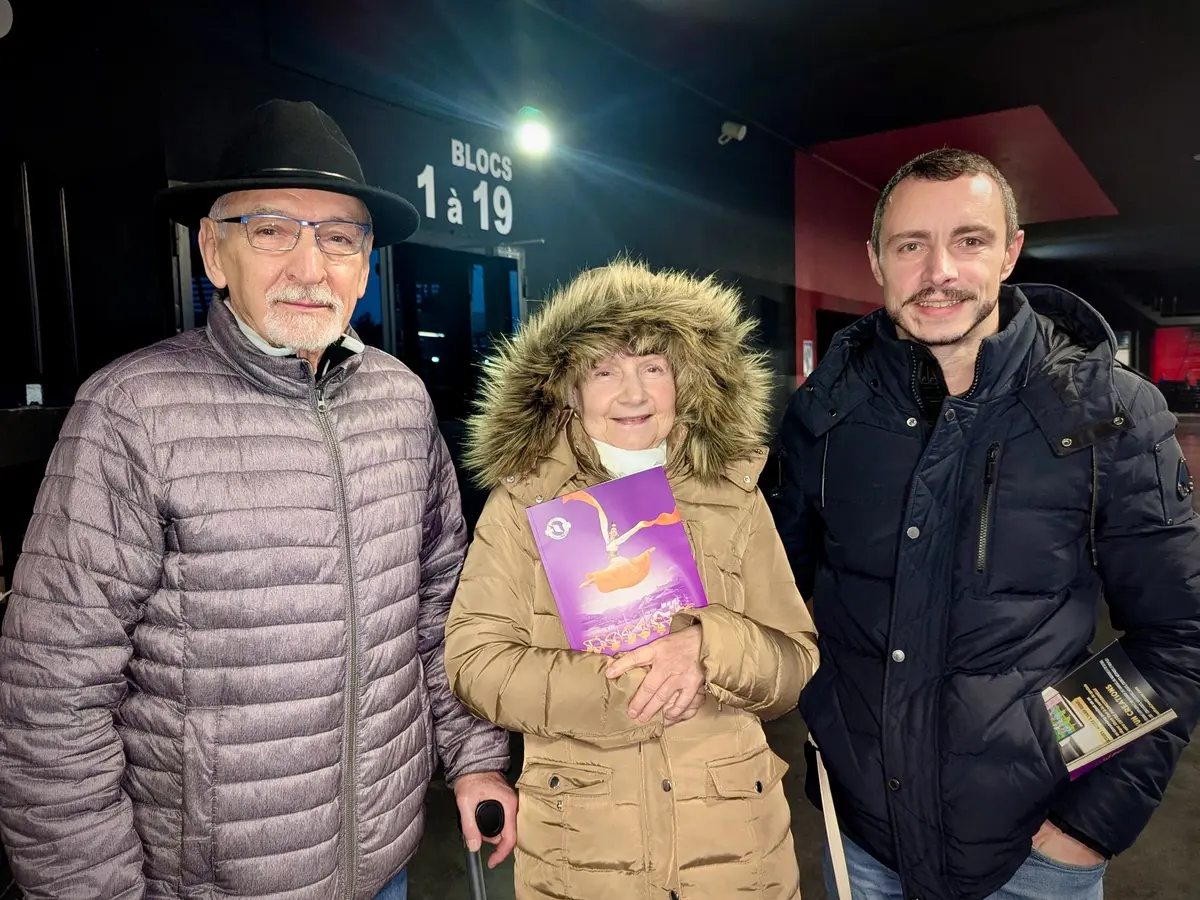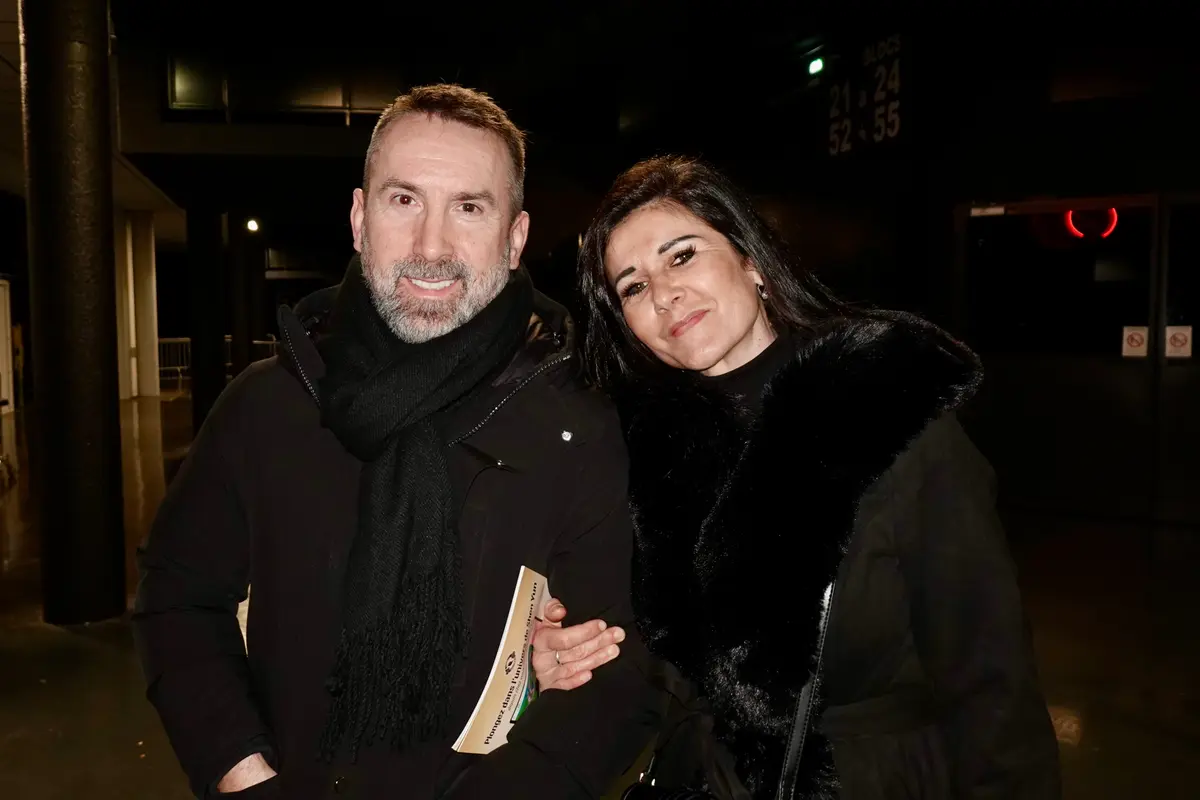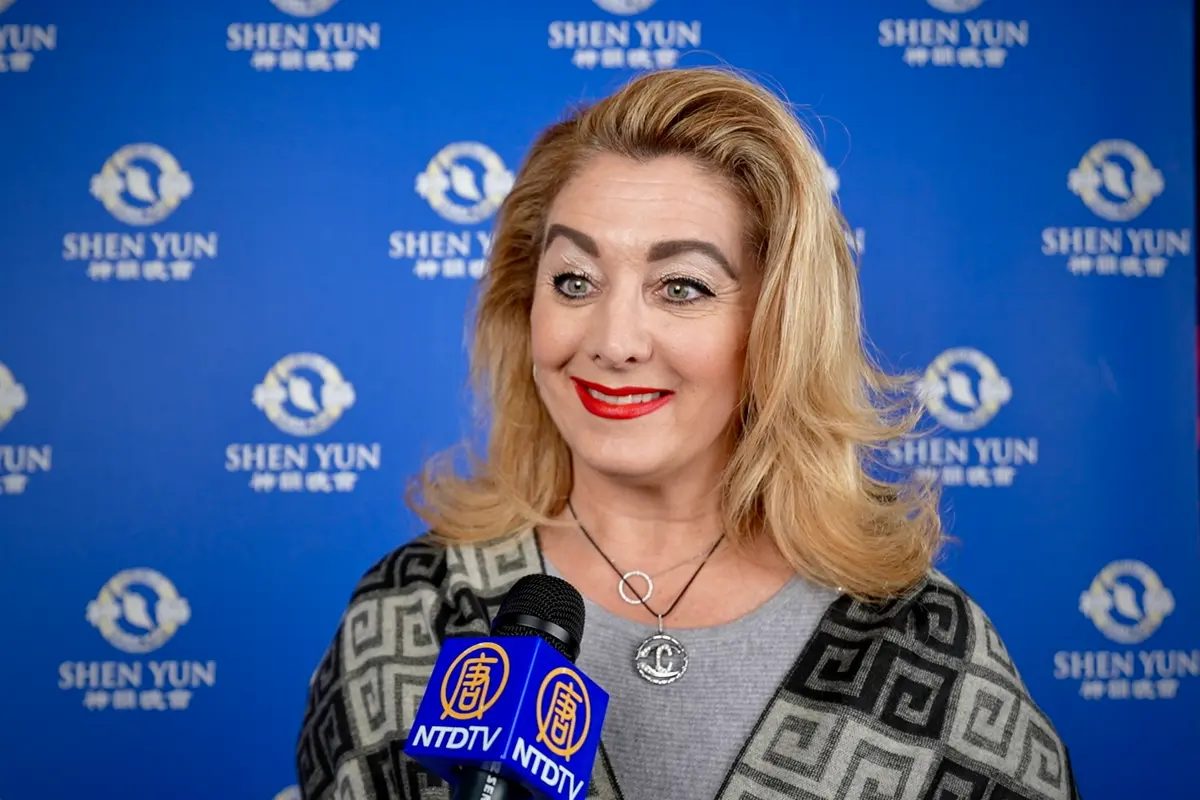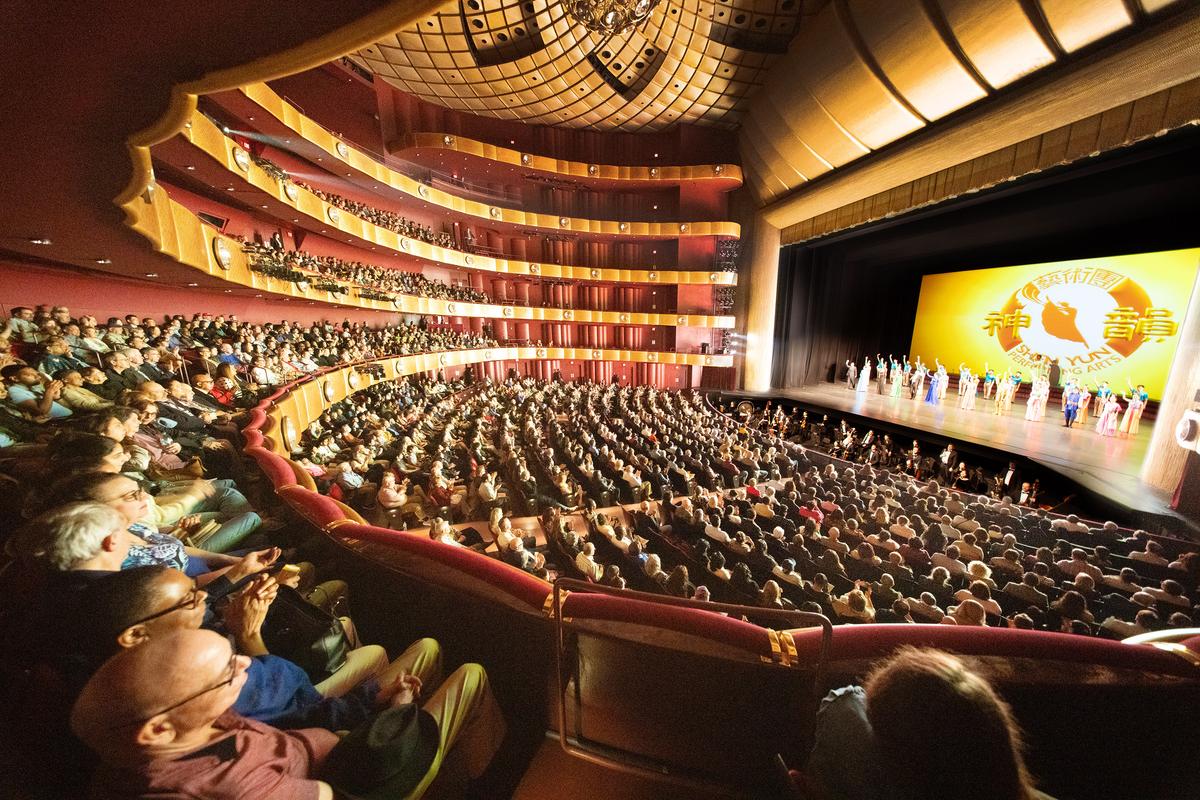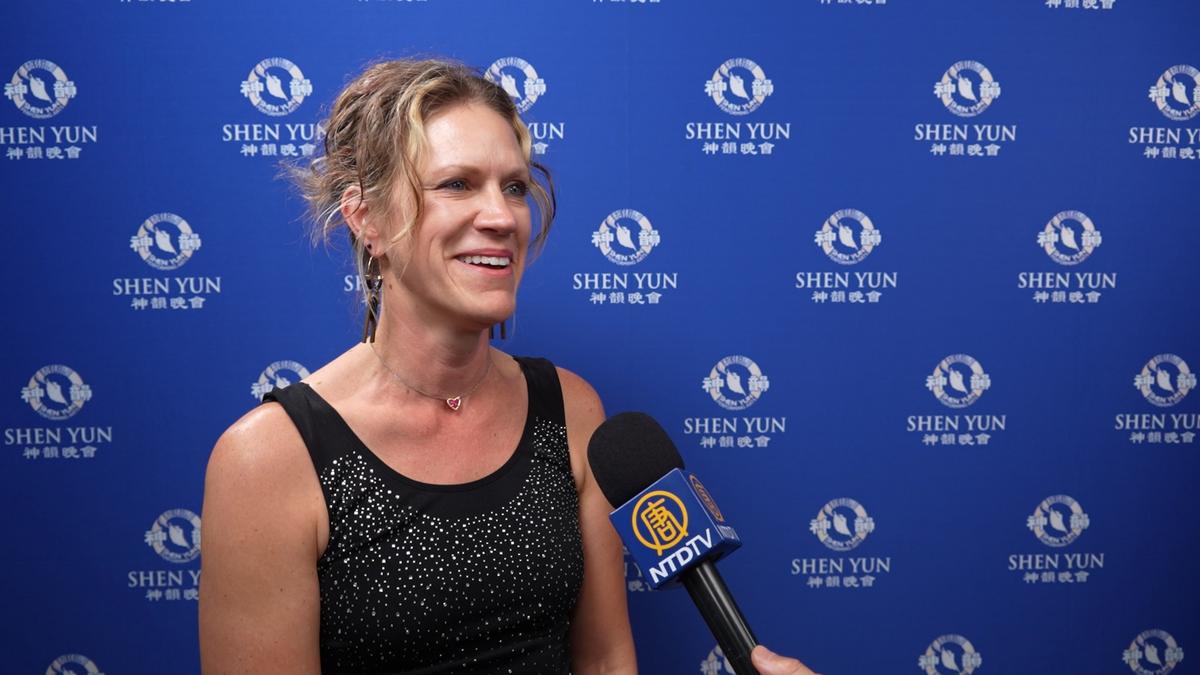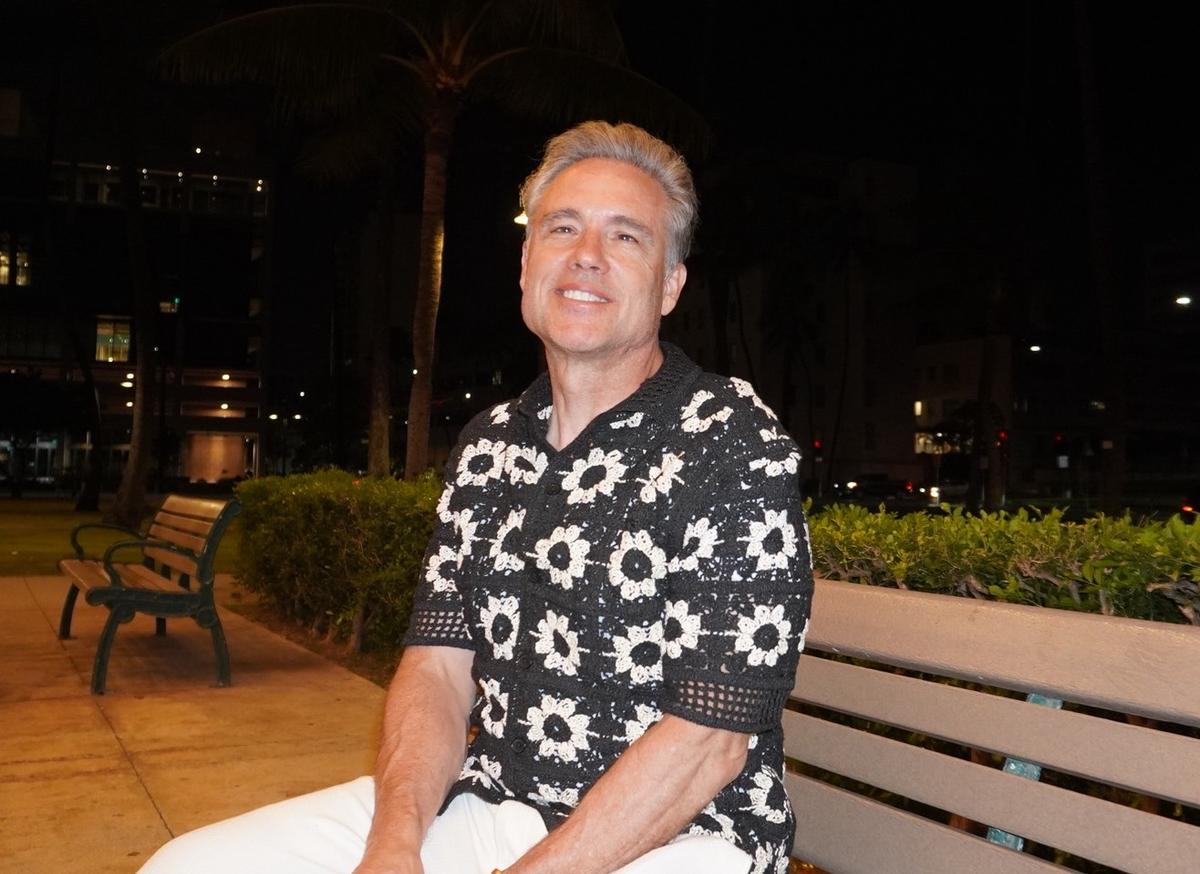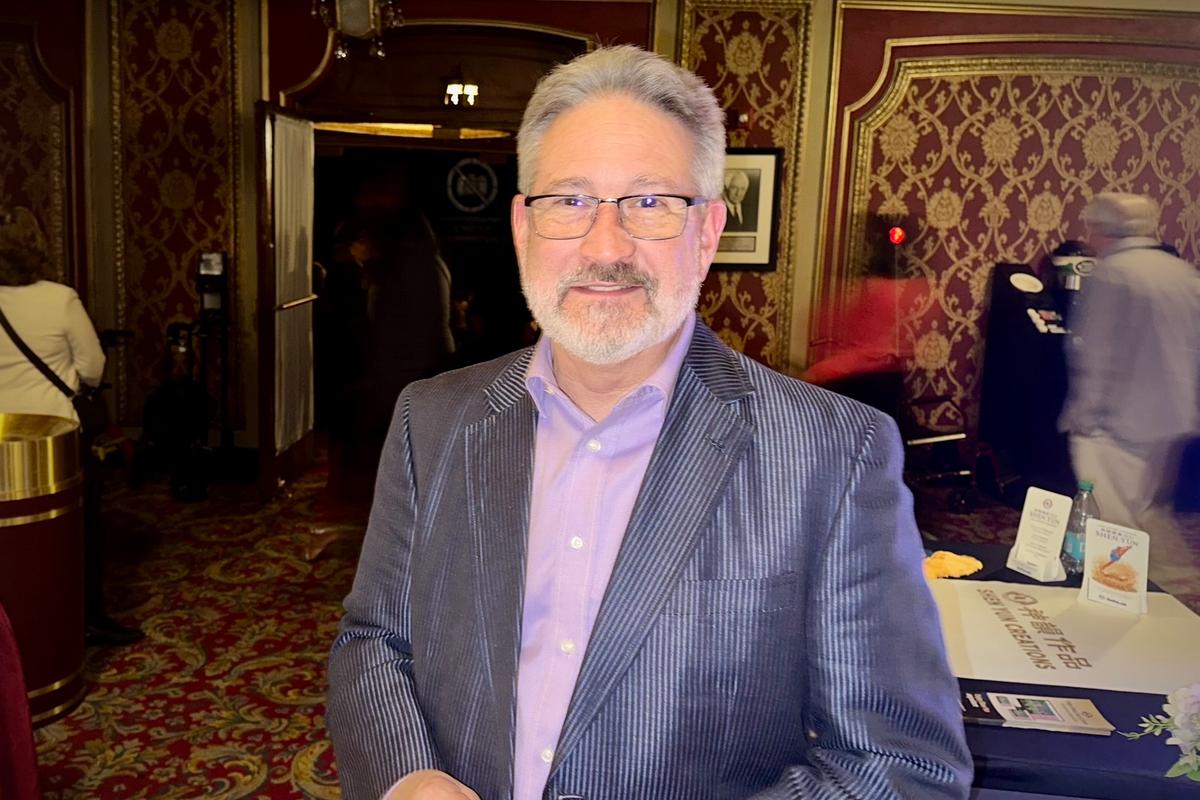“I’ve never seen anything like this before,” Marioni said, who attended on Feb. 23, 2020. “So I was absolutely blown away by the colors, the costumes. And what was really interesting to me was the story behind it all. So that was the most interesting aspect in it. Really added to the dance and the story ... it put more meaning to it for me, yes. I really appreciated that.”
And deep meaning indeed is what Marioni came away with from the presentation.
“Oh! You know, whenever they were telling the story about the couple ... people being repressed for their beliefs, that actually, that part brought tears to my eyes because I didn’t realize. That made it more real for me to see that expression and see the pain happening.”
Falun Dafa is an ancient method of meditation and self-refinement that follows three moral principles: truthfulness, compassion, and tolerance. Spiritual traditions like Falun Dafa are not welcomed in China today by the ruling communist party, which enforces its official atheism and materialism onto the country that was once called “The Divine Land,” and has done so since coming to power since 1949.
Marioni felt thankful that Shen Yun included narratives about the persecution of these innocent believers. She was moved to tears.
“I felt it. I really did. There were actually probably about three different times that I was trying to hide that I was tearing up. So I was emotionally moved by that and I was grateful to be able to have it shown to me in a way that I could feel it and understand it better,” the photographer said.
Marioni was so intrigued she felt she needed to further understand the story she'd just seen.
“Wow. Well I actually looked up in the intermission Falun Dafa, and getting to know a little bit more about, see what it represents and what it means and that it’s being repressed,” she shared. “That made me very sad because I felt like that that was something that, I mean, shouldn’t be.”
“It’s a good thing! And I don’t see how it could be looked upon in a negative way. So, that, it was very interesting to me and now I feel like I want to learn a little bit more about it, you know. I know about qigong a little bit, but reading up on it gave me a better idea but I would like to learn more,” Marioni said.
“Oh, my gosh. Well, you know, that brought in that spiritual element for me,” Marioni said, in reference to this finale, as well as the opening scene, which also depicted the Almighty, “to be able to see that and try to understand what it represented. I guess in a way it put me in touch a little bit with my feelings of spirituality and seeing that, you know, like, ‘Okay, what does this mean to them, you know, what does this mean in the story?’”
“I did feel more connected. And the representation, you know, the colors, the light, the costumes. It felt, yes, very easy for me to go into that.”
“Oh! The composition, the choreography, the poise, everything was just so well put together. It was moving art, you know?” she said. “It was stunning to see it.”
“The color was, the color and the costumes, the way the colors would fade into other ones were just—it was, was like a moving rainbow, you know. It was beautiful!
“And the music, the instruments, I’d never really heard those live, performed. So I felt like I was getting a taste of something that I really couldn’t get very many places. So that was, it was a very unique experience and I’m really happy I came and I got to see it today,” Marioni said.
Shen Yun’s unique live orchestra consists of Eastern and Western instruments blended harmoniously to bring the artistic director’s original compositions to life in a way no other orchestra in the world can.
Marioni was glad she attended the performance that day.
“Yes! I’m very happy. Yes, it was unlike anything I’ve seen before, and it was absolutely stunning,” she said.

